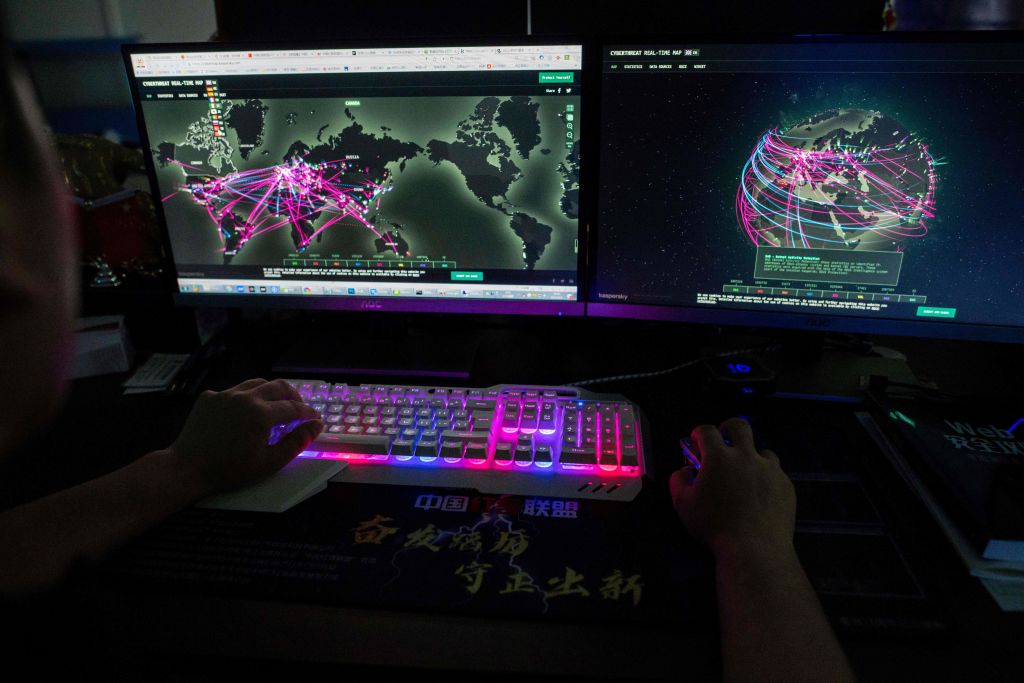A framework and strategy for Indigenous STEM and cyber pathways
Executive summary
Indigenous recruitment and retention in the Australian Defence organisation is defined by a high target of 5% participation in the armed services and 3% in the Australian Public Service component of the Defence Department by 2025. The participation target is a point of pride and a source of clear goodwill and has provided momentum in several areas of Defence for Indigenous employment and pathways.
However, the individual areas of success and effort are yet to translate into an effective whole-of-Defence framework with cohesive lines of effort. This policy report suggests how that can change. It provides a framework and strategy for Defence to support science, technology, engineering and mathematics (STEM) recruitment and retention and cybersecurity careers, particularly through engagement with the vocational education and training system and through targeted relationship building with university- and school-based Indigenous STEM initiatives.
We propose that Defence should enact a wider set of supporting measures—particularly in data and reporting to track professional development—that’s more likely to create more sustainable success that delivers organisational improvements and outcomes for Defence. That should include mechanisms to enhance the achievements of the Indigenous Procurement Policy.
Defence must ensure that it meets its immediate skills shortfalls as well as its long-term obligations under the Closing the Gap initiative and the Defence Reconciliation Action Plan to foster genuine and meaningful relationships built upon trust with Indigenous peoples.
We suggest how that’s possible through a framework and 56 recommendations focusing on 12 areas of activity:
- data, reporting and user-experience web design
- career pathways
- defence and technology contractors
- community engagement
- procurement and business development
- veterans’ employment and procurement
- the vocational education sector
- universities
- recruitment
- retention
- coordination with other public agencies
- international partnerships.
Action on those recommendations will ensure that Defence is an employer of choice and fosters genuine and meaningful trust with Australia’s Indigenous peoples. And it will also build Defence’s capability to keep our nation safe and secure in a more dangerous world.
Introduction: Building trust—what’s visible and what are the blind spots?
The recruitment and retention of Indigenous Australians in the Defence organisation is defined by high ambitions. The aim is to reach 5% Indigenous participation in the armed services and 3% in the Australian Public Service (APS) by 2025. However, the implementation of employment pathways is lagging due to weak engagement with the talent pool, especially with Indigenous Australians who are training in science, technology, engineering and mathematics (STEM) fields in the vocational education and training (VET) and university sectors. Weak talent market mapping means that current success rates in Defence recruiting are unlikely to be maintained, particularly as competition to attract and retain Indigenous workers increases.
A common story in the services and Defence APS is the slow progress on the policy reform that’s urgently needed to build Indigenous employment pathways into Defence and through to the wider defence ecosystem, including veterans’ employment. Defence needs to demonstrate that it invests in the long-term training, retention and advance of Indigenous personnel.
Our discussions with Defence personnel have revealed that silos in the Defence organisation work against Indigenous recruitment and retention. The services are driving much reform, but a comprehensive data picture and an annual public report that canvasses what’s working well—that establishes clear process metrics, benchmarks and areas for attention, including in recruitment, retention, training and professional development—means that many work areas are without a clear guide or a definition of success beyond participation targets, so their efforts are unfocused and can be discordant.
Developing measures and public reporting, including on how senior leadership is achieving Indigenous targets within the workforce, will be an important step forward. It will cement Defence’s leadership role as an exemplar to other parts of government and the wider defence industry. It will also ensure that Indigenous employment is addressed as part of the renewed drive to optimise defence data, as outlined in the Defence Data Strategy 2021–2023.1
Setting up Indigenous employees for success within the One Defence team requires Defence personnel at all levels to have greater situational awareness of the grassroots reasons for Indigenous Australians joining, staying in, or leaving the organisation. Developing career pathways requires policy and procedures geared towards addressing the drivers and impediments to jobs and training in cities, regions and remote Australia for Indigenous men and women of different ages.
Addressing career pathways and enhancing retention require a mindset that anticipates employee issues—including cultural factors—and addresses them so that Indigenous Australians decide to join and stay. The cultural integrity framework for the APS, sponsored by Defence, will be an important part of that effort. The framework seeks to provide support for employees and leaders so that Indigenous personnel are invested in as a resource in Defence and in the Australian Government’s broader strategic thinking and so that their experience and insight are valued appropriately.
The ‘pathway’ metaphor is often deployed to describe Indigenous training and employment programs and equity and social inclusion initiatives.2 Pathways are rarely straight lines. Indigenous employment pathways aren’t just about entry points, but are also about systemic training and development opportunities within Defence and beyond into veterans’ employment. Defence will need to approach attraction broadly to reach school leavers and students in the VET and university sectors. Defence and other agencies will need to ensure that the growth of Indigenous opportunities is part of the government’s revised ‘industry cluster’ model for skills development.3
One bright spot is the Indigenous businesses sector, which is a growing source of employment, labour market information and training for young Indigenous people. Defence is a driver in that sector. In 2020–21, Defence outstripped its target of 676 contracts, awarding 6,476 contracts worth $610 million to Indigenous businesses.4 Although that was a doubling of contract value, from $300 million to $600 million in one year, a House of Representatives committee report tabled in August 2021 suggested various measures to increase the capability of the Indigenous business sector in order to push the sector further up the value chain. Since 2015, Defence has awarded $1.86 billion in contract value to more than 550 Indigenous businesses.
Problems in the Indigenous business sector, such as ‘blackcladding’ (creating a management structure that satisfies the ownership criteria for the Indigenous Procurement Policy but in which control of the enterprise can be vested in non-Indigenous managers), are not adequately addressed by current policy. Indigenous business operators have said that they feel discriminated against in procurement panel processes and that they have higher barriers to overcome. Although that view is also characteristic of many non-Indigenous small and medium-sized enterprises (SMEs), it risks undermining Defence’s current achievements.
The size of Defence’s procurement portfolio creates an expectation that it should take a leading role in procurement policy reform. Improved opportunities that reinforce the expansion and maturation of sovereign industrial capability through Indigenous businesses would be a step forward, given that Indigenous businesses have substantially better employment outcomes for Indigenous people than non-Indigenous businesses.5 However, that will be a real challenge, as the sector needs to mature in its training and finances to deliver to Defence. A veterans’ business procurement policy could strengthen relationships with Indigenous veterans.
Initiatives for Defence and other parts of government that tie together training, scholarships and pre-apprenticeship programs would provide a major lift to current efforts. Initiatives to build capability (business incubators, venture financing and ensuring that existing policy tools are being used effectively and opportunities for veterans’ businesses) would increase the ability of Indigenous businesses to deliver higher value contracts. There are risks in all those areas, so Defence’s activities will need to be communicated clearly to stakeholders and political decision-makers, and the linkage of those policies to Defence’s core purposes—delivering capabilities for the government to use to advance Australia’s security—must be clear.
This is a clear point of difference between the broader defence industry and the Defence organisation. Defence’s ambitions include a market-leading participation target, using procurement as a driver of an economic and social uplift, and a commitment to meet Closing the Gap targets. Defence can encourage industry to take up the challenge, given its stake in key areas such as cybersecurity. In the broader business environment, there’s patchy engagement with reconciliation processes (particularly the registration of reconciliation action plans with Reconciliation Australia) among major defence contractors, including those that provide recruitment advertising or provide technology. This is an area where Defence can influence overall change in the sector.
There will always be tension for Defence and government between targeting problems that are clearly visible (and for which data is available) and addressing blind spots. Labour market data on Indigenous Australia is notoriously unreliable, so government action can be misaligned. For example, an effort to improve the quality of labour force statistics by the Department of the Prime Minister and Cabinet’s Central Analytics Hub was shelved because of the Covid-19 pandemic, the bushfire season and data access problems. Defence can be a powerful advocate for improved federal and state data collection as a basis for policy and implementation in this area.
Visible data creates a bias towards taking action that seems relatively straightforward, but which in fact will require concerted efforts on multiple fronts and involve several government portfolios or work areas. For example, the Certificate IV in Cybersecurity qualification in the vocational sector is only four years old. The curriculum was developed by TAFE administrators and several technology and cybersecurity companies and overseen by the Victorian Registration and Qualification Authority, but with no Defence involvement.
A seemingly straightforward solution, such as directing recruitment efforts towards TAFE cybersecurity students, can be surprisingly complicated. Current data (from 2020) shows that 129 Indigenous students were studying for the Certificate IV in NSW, 55 in Queensland and 275 in Victoria.6 Twenty-four registered training organisations across the country are currently approved to deliver the course.7 However, the National Centre for Vocational Education Research public data isn’t disaggregated to the campus level, so exactly where those students are learning (including online) is difficult.
This is why relationship building comes up so often in discussions with those in Defence charged with attracting Indigenous candidates and with their counterparts in the education sector responsible for guiding students into careers. Relationships trump everything when data is ambiguous, and raw numbers (on, for example, completion rates) might not tell the full story of Indigenous perseverance. For example, Indigenous students are much more likely than non-Indigenous students to experience conflict between study and family commitments, including caring for children or other family members, which affects results.8
Defence hasn’t built strong enough relationships through frequent interactions with the VET and university sectors, including Indigenous Elders in universities and Indigenous pro-vice chancellors (some of whom are ADF veterans). Its signature cyber initiatives—the ADF Cyber Gap and Cyber Defence College—don’t have a visible Indigenous engagement strategy or a clear link to the Defence TAFE Employment Scheme. TAFE is a major trainer of Indigenous Australians.
Defence has set itself an ambitious goal in the Defence Reconciliation Action Plan 2019–2022: ‘fostering genuine relationships built on trust.’9 Trust is intangible, but high-trust organisations have lower costs and ensure social cohesion in the face of rising uncertainties.10 How Defence holds itself to account and builds long-term relationships with Indigenous Australians will be a key marker of its future success.
To build trust makes the task of Defence more ambiguous and success more difficult to assess in the short term. Box-ticking exercises will risk jeopardising Defence’s ambitions to be an employer of choice. Defence isn’t a social policy portfolio, but it does have obligations under wider government policies, particularly the National Agreement on Closing the Gap. The population growth of Indigenous Australia is shifting towards the southern capital cities and the more populous states and territories, which is something to keep in mind when allocating resources because of the potential to exacerbate existing inequalities in access.11
The harder task is to forge relationships with communities and address the impacts of Defence’s past policies with Indigenous people, as indicated in the Defence Reconciliation Action Plan. Aspects of this work are being done through the engagement activities of the Indigenous Liaison Officer network and through initiatives such as the appointment of Indigenous elders to military bases. But some foundational blocks are missing, such as an Indigenous youth engagement strategy and a digital service design attuned to the way Indigenous candidates access internet services, including for labour market information.12
Fostering genuine trust is necessary for Defence to truly represent the nation that it protects. There are opportunities to partner with Indigenous Australians, build capacity alongside them and prioritise their leadership so that the collection and use of data, strategies on staff training and development, and strategies on youth, veteran, business and community engagement are developed in genuine partnership.
Full Report
We warmly encourage you to download and read the full report, which can be found here.
Acknowledgements
ASPI ICPC would like to thank all of those who peer-reviewed drafts of this report, including Major General Marcus Thompson, Stephen Chey, Michael Shoebridge, Fergus Hanson, John Coyne, Miah Hammond-Errey and Anastasia Kepatas. We’re also grateful to individuals we consulted in government, industry and academia, including participants at a workshop with Indigenous members of the Australian Defence Force that helped to shape and focus this report.
This report was commissioned by the Australian Department of Defence Strategic Policy and Intelligence Group. The work of ASPI ICPC would not be possible without the support of our partners and sponsors in governments, industry and civil society.
Within this report, the term ‘Indigenous’ is used to refer both to Aboriginal people and to Torres Strait Islanders.
What is ASPI?
The Australian Strategic Policy Institute was formed in 2001 as an independent, non‑partisan think tank. Its core aim is to provide the Australian Government with fresh ideas on Australia’s defence, security and strategic policy choices. ASPI is responsible for informing the public on a range of strategic issues, generating new thinking for government and harnessing strategic thinking internationally. ASPI’s sources of funding are identified in our annual report, online at www.aspi.org.au and in the acknowledgements section of individual publications. ASPI remains independent in the content of the research and in all editorial judgements.
ASPI International Cyber Policy Centre
ASPI’s International Cyber Policy Centre (ICPC) is a leading voice in global debates on cyber, emerging and critical technologies and issues related to information and foreign interference and focuses on the impact those issues have on broader strategic policy. The centre has a growing mixture of expertise and skills, including teams of researchers who concentrate on policy, technical analysis, information operations and disinformation, critical and emerging technologies, cyber capacity-building, satellite analysis, surveillance and China-related issues. The ICPC informs public debate in the Indo-Pacific region and supports public policy development by producing original, empirical, data-driven research. The centre enriches regional debates by collaborating with research institutes from around the world and by bringing leading global experts to Australia, including through fellowships. To develop capability in Australia and the Indo-Pacific region, the ICPC has a capacity-building team that conducts workshops, training programs and large-scale exercises for the public and private sectors. We thank all of those who support and contribute to the ICPC with their time, intellect and passion for the topics we work on. If you would like to support the work of the centre, contact: icpc@aspi.org.au
Important Disclaimer
This publication is designed to provide accurate and authoritative information in relation to the subject matter covered. It is provided with the understanding that the publisher is not engaged in rendering any form of professional or other advice or services. No person should rely on the contents of this publication without first obtaining advice from a qualified professional.
© The Australian Strategic Policy Institute Limited 2022
This publication is subject to copyright. Except as permitted under the Copyright Act 1968, no part of it may in any form or by any means (electronic, mechanical, microcopying, photocopying, recording or otherwise) be reproduced, stored in a retrieval system or transmitted without prior written permission. Enquiries should be addressed to the publishers. Notwithstanding the above, educational institutions (including schools, independent colleges, universities and TAFEs) are granted permission to make copies of copyrighted works strictly for educational purposes without explicit permission from ASPI and free of charge.
First published April 2022.
Front and back cover images: ‘Silhouettes in the sky’, Marcus McGregor Cassady.
Funding
Funding for this report was provided by the Australian Department of Defence Strategic Policy and Intelligence Group.












